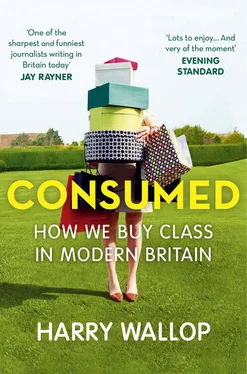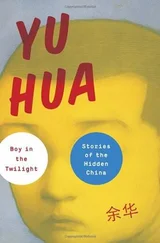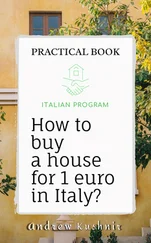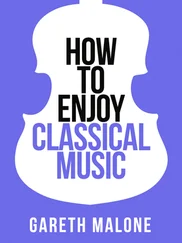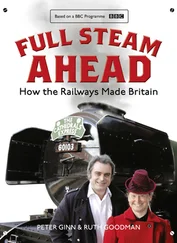Class has never been simply about whether you were rich or poor, whether you were the boss or the worker, or if you paid for your education or not. It was more than that. Class was always a subjective, loaded term, one that implied judgement. It used to be about a thousand little rules designed to trip up those not in the inner circle – what time you ate your evening meal, phoning for the fish knives, how you pronounced Cholmondeley and Featherstonehaugh Ukridge, which day to wear an old school tie. Much of it was knowledge, wrapped up in a secret language and accent, and was a way that social superiors knew to assert their superiority. It was tricky (though not impossible) to fake, and it was designed, so it seemed to those not in the inner circle, to keep outsiders in their place. When Brian Winterflood started a job at the London Stock Exchange in 1951 he wore brown shoes to work, only to be greeted on his first day with shouts, running around the exchange, of ‘Brown boots, brown boots!’ He quickly scuttled off to find a pair of black shoes. ‘And I’ve always worn black ever since.’ Hardly anyone remembers these rules now. Brown shoes are a common sight in the City, while accents have become blurred, with the public school drawl edging ever closer to the Essex twang. Even Prince Harry’s speech is peppered with glottal stops.
Class has changed, as Britain has changed, and its populace has been faced with an ever wider array of choices. Class used to be about your position in life; now it appears to be increasingly about lifestyle. This is a term that only took hold in the 1950s when there started to be enough money around to furnish a lifestyle with more than a scuttle of coal and a week’s holiday in a boarding house at Blackpool. And it took off in the 1960s with the glossy Sunday newspaper magazines that chronicled the swinging consumerism of the era.
This book is an attempt to map some of those changes and to find out what class means in Britain today. It is about the habits and lifestyles of millions of households and families who grew up on salad cream and ended up using balsamic glaze from Morrisons on their monkfish fillets. Of how holidays hop picking in Kent turned into flights to Disney World and cruises around the Canaries, and how tables bought on tick from the Co-op became adorned with Jo Malone smelly candles and an orchid from M&S.
This makes no claim to being a history book, but it does have a nominal starting point: 1954, a year of British triumph, when the first sub-four-minute mile was run, the year after Everest had been conquered and the structure of DNA established, the early years of the new Elizabethan era when it seemed after two decades of deprivation and war that anything was possible. Importantly, for millions of households, 1954 was the year when meat rationing was lifted, the last of the restrictions to be scrapped and an end to 14 years of continually having to check your pocket book before you calculated what you could buy. Families finally had the freedom to spend their weekly pay packet as they saw fit. It kick-started six decades of conspicuous consumption, which have culminated in people scanning their iPhones for Wagamama discount vouchers and supermarket delivery vans ferrying jars of anchovies and espresso pods at ten o’clock at night around the streets of Britain. An era which now looks under threat from the dramatic and almost unprecedented collapse in disposable income for many families – a phenomenon that did not happen in such a sustained way during the recessions of the 1950s, 60s, 70s, 80s and 90s.
It has been six decades of radical change. 1954 also saw the first purpose-built comprehensive school, an attempt to give equal opportunities to the children of Britain, regardless of where or to whom they were born; the release of Bill Haley’s ‘Rock around the Clock’, the first cultural event to give a voice to teenagers; the very first Wimpy bar, bringing the concept of ‘jet-age eating’ to the masses; and the first package holidays to Benidorm, giving ordinary workers a taste of the sun-kissed beaches that only their betters had enjoyed a generation before.
During this second Elizabethan era there have been plenty of seismic changes and many things that have not really moved on at all. Class manages to straddle both camps. In the last 60 years there has been the almost complete destruction of the upper classes, the substantial dismantling of the working classes and the enormous, remorseless rise of the middle classes.
The landed aristocracy who owned Britain and ruled Britain have, save for a few notable exceptions, been forced to either sell off or open up their family homes to the public and vacate their comfortable benches in the House of Lords. Meanwhile, millions of manual workers who were paid decently for a hard day’s work have ended up jobless or in call centres, while the unions and working men’s clubs, organisations that gave so many working communities their backbone, appear to be in terminal decline.
The population of Britain has not got smaller; far from it. Those at the top and the bottom have not disappeared – they have merely moved class. Millions have left the ranks of the working classes and joined the ranks of the middle classes, while hundreds of thousands of those at the top have taken a step down. In the mid-1950s various surveys suggested that about a quarter of the population considered themselves ‘middle class’; that figure now is consistently 70 per cent. The rest say they are working class. No one openly admits to being upper class.
But even if seven in ten people are middle class, that does not mean they all share the same lifestyle. There has certainly been some blurring of once strict boundaries of taste and consumption patterns. The majority of people own their own homes, and some of those a place in the sun too. Even more own a car. Prime ministers wear trainers, royal princesses pop into Topshop to buy skirts, sushi is so commonplace that commuters can pick it up with their pint of milk at the station, and Iceland can sell you frozen chicken Kievs. Sky satellite dishes, formerly a sign of ‘council house culture’, are now found on the side of Belgravia maisonettes. What was once recherché is now quotidian, products and decorations that used to be strictly for the working class are now symbols of distinction. Politicians rush to Greggs to scoff sausage rolls and pasties in an attempt to prove how ‘in touch’ they are with ‘ordinary’ voters, while chipped and rough kitchen utensils that their grandparents would have been thrilled to have thrown out are now snapped up by their wealthier descendants as ‘vintage’.
Despite the severe recession, most of us enjoy a lifestyle of what seems – in comparison with 1954 – unbridled luxury: flights to Thailand, 47-inch televisions, food blenders, bread makers, steak on sale at the local supermarket (open till 10 o’clock at night), fashions that can be replenished every season, olives served alongside chilled chardonnay at your local pub. We are, in consumption terms, nearly all middle class. The white-goods revolution that started under Harold Macmillan, along with the white heat one under another Harold, not only put gadgets into consumers’ hands, it freed millions of women from the drudgery of housework, allowing them to join the ranks of the salariat. Washing machines, freezers and microwaves replaced domestic servants, and in so doing played their part both in creating two-income households and, in turn, a society with enough disposable income for status-defining trips to Itsu and days out at Blenheim Palace, where they can buy the ‘Below Stairs’ range of House Maid’s scrubbing brushes and Butler’s champagne openers.
Even as early as 1960 David Marquand, the academic and future Labour MP, declared that – superficially at least – ‘the class war appears to be over, its warriors drowned in a sea of consumer durables. The working class itself is rapidly adopting middle-class standards, middle-class values and a middle-class style of life. Marks and Spencer dress every shopgirl like a débutante, hire purchase equips working-class kitchens with gadgets which would once have made the middle classes gasp with envy; night after night telly erodes what cultural barriers still remain to divide one class from another. These changes may disconcert the intellectual and appal the nostalgic, but the onward rush of modern industry continues undismayed, slowly transforming the most class-conscious country in the world into “one nation”.’ 3
Читать дальше
